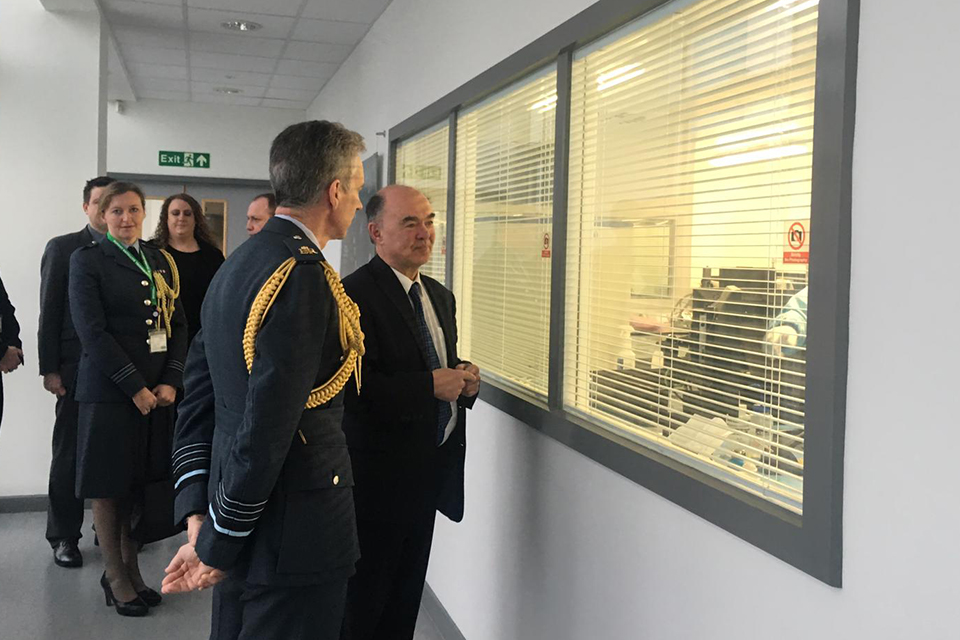News story: Military support for snow relief
Updated: 05 MARCH UPDATE
– Military assistance in Lincolnshire, Devon, Shropshire, Hampshire, Manchester, Wiltshire and Scotland has now completed. One Chinook has been deployed to airlift supplies to areas of Cumbria on 05 March. 328 personnel and 124 4×4 vehicles have been used to assist emergency services with the snow response.
The military has used vehicles and personnel to transport essential NHS staff to hospitals and vulnerable people in the community. The military has supported local police forces to assist people stranded on motorways and have used aircraft to transport supplies to areas cut off by the snow.
On Friday 2 March, the Defence Secretary met with soldiers from 1 Royal Irish, who were carrying out vital work transporting health workers in the Shropshire area, which was hit by heavy snow.
Defence Secretary Gavin Williamson said:
Our Armed Forces are doing an incredible job up and down the country, helping the emergency services, local authorities, and the NHS supporting those in need.
From Scotland to Cornwall, more than 100 personnel from across the forces are making a real difference in getting nurses and doctors to vulnerable and elderly patients, and helping rescue those left stranded in freezing conditions.
I pay tribute to their professionalism, dedication and sense of duty. They are proving once again that Britain can always depend on our troops to protect us no matter the time, no matter the place, and no matter the problem.
I witnessed for myself the vital role they are playing in helping the British people during the treacherous weather which has caused so much difficulty for so many people.
I am extremely grateful for all that our personnel are doing and will continue to do over the weekend – and I want to thank them for answering calls for help across the country.
Military assistance to date:
- 20 RAF personnel and 10 4×4 RAF vehicles transported health staff to hospitals and communities in Lincolnshire.
- The military assisted Greater Manchester Police to enable them to access and assist motorists on the M62
- Army soldiers and 10 4×4 vehicles transported NHS Scotland staff needed to deliver critical care services to and from Edinburgh Royal Infirmary and the Western General Hospital. Reservists from the Scottish and Northern Irish Yeomanry were utilised alongside a further 20 4x4s from across the three services in Tayside and Fife to support NHS Scotland.
- 20 Army soldiers and 10 4x4s transported health staff to hospitals and support health workers in visiting vulnerable people in the community in Shropshire.
- 20 Royal Marines and 10 4×4 vehicles transported health staff to hospitals and communities in Devon and Cornwall
- The military provided 10 vehicles and personnel to transport NHS workers in the Salisbury and Swindon area
- One Chinook has been deployed to deliver supplies to communities in Cumbria that have been cut off due to snowdrifts.
Military assistance in numbers:
- 328 personnel have helped with the snow response
- 124 4×4 vehicles have been mobilised
- 1 Chinook has been deployed
Armed Forces personnel have also volunteered in their own time to help those in need.
There are always three UK standby battalions held at high readiness to respond to UK contingencies and emergencies, including support to local authorities. We have the right people with the right training to respond to a range of contingencies.
